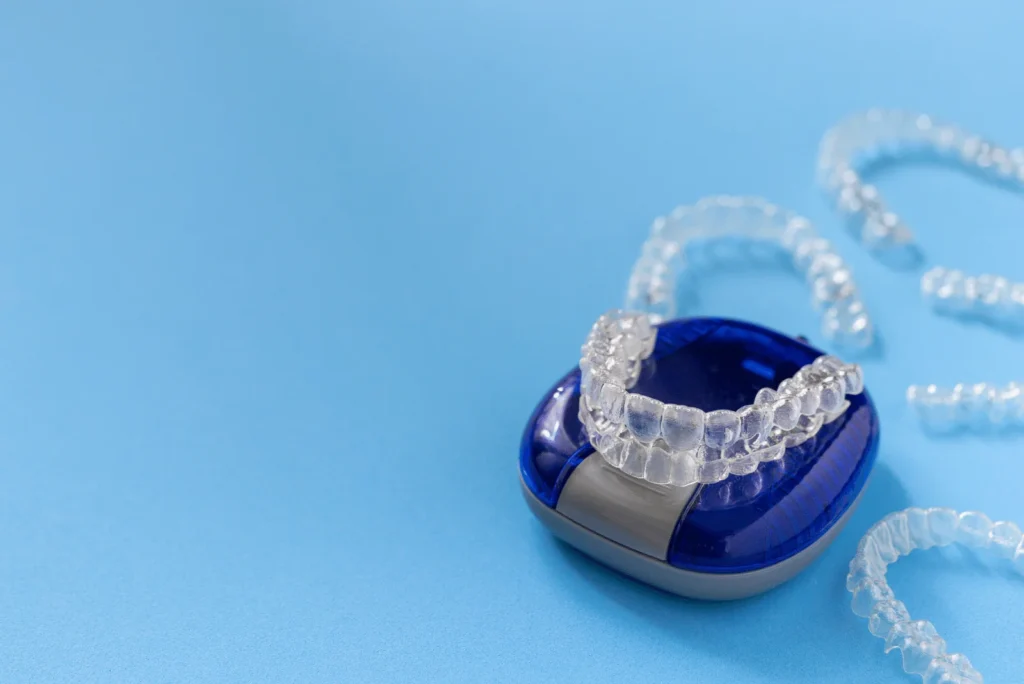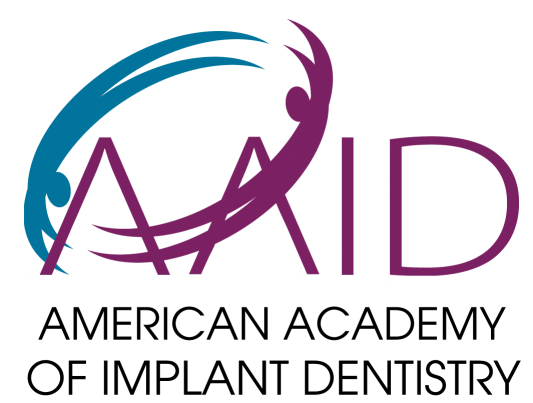Retainer after Invisalign treatment is absolutely necessary to maintain your newly straightened smile, as teeth naturally tend to shift back to their original positions without proper retention support. At Lansdowne Family Dental, Dr. Wael Elosta and our experienced team with over 15 years of Invisalign expertise consistently emphasize that the retainer phase is just as crucial as the active treatment phase for achieving lasting results and protecting your investment in your perfect smile.
While this straightforward answer addresses the main question, the importance and complexity of post-Invisalign retention care extends far beyond simply wearing a device. Essential aspects of retainer use include:
- Permanent commitment – Lifelong retention is necessary to prevent teeth from shifting back
- Various retainer types – Different options available based on your specific needs and preferences
- Proper wear schedules – Strategic timing for maximum effectiveness and convenience
- Maintenance requirements – Proper care to ensure retainer longevity and hygiene
Understanding why retainers are crucial after Invisalign treatment helps patients appreciate that orthodontic success depends on both the active straightening phase and the retention phase. Without proper retainer use, even the most successful Invisalign treatment can gradually lose its results over time.

This comprehensive guide will explore why retainers are essential, the different types available, effective wearing strategies, proper maintenance techniques, and everything you need to know about protecting your beautiful new smile for life.
Will I Need To Wear A Retainer After Invisalign Treatment Is Finished?
After completing your Invisalign treatment, your teeth aren’t permanently set in their new positions. This fact often surprises patients, but understanding the biology behind tooth movement helps explain why retainers are so crucial.
- Bone Remodeling Process:
- During Invisalign treatment, your jawbone softens to allow tooth movement.
- This process, called bone remodeling, involves osteoclasts breaking down bone and osteoblasts building new bone.
- Post-treatment, the bone needs time to fully rebuild and solidify around your teeth in their new positions.
- This rebuilding process can take several months to a year.
- Elastic Tendency of Periodontal Ligaments:
- The periodontal ligament, a network of connective tissue fibers, connects your teeth to the jawbone.
- These ligaments act like tiny rubber bands and have a “memory” of your teeth’s original positions.
- Without a retainer, these fibers can exert force to pull teeth back to their pre-treatment locations.
- It can take up to a year for these ligaments to fully adapt to the new tooth positions.
- Constant Oral Forces:
- Your tongue, lips, and cheeks constantly exert pressure on your teeth.
- While these forces are minor, over time, they can cause slight shifting if not countered by retainer wear.
- The pressure from your tongue alone can be up to 500 grams per square centimeter!
- Natural Aging Process:
- As we age, our teeth naturally tend to shift forward and inward.
- This process, known as mesial drift, can affect even perfectly aligned teeth.
- Long-term retainer wear helps counteract these natural age-related changes.
Types of Retainers: Choosing the Right Option for You
There are several types of retainers, each with its own advantages. We’ll work with you to determine the best option based on your specific needs, lifestyle, and preferences.
- Essix Retainers:
- Clear, removable retainers similar to Invisalign aligners
- Custom-made to fit your teeth snugly
- Made of thin, flexible plastic (usually 0.030″ thick)
- Pros:
- Nearly invisible
- Easy to remove for eating and cleaning
- Less expensive than some other options
- Cons:
- Can warp if exposed to heat
- May need replacement more frequently (typically every 1-3 years)
- Vivera Retainers:
- A premium type of Essix retainer made by Align Technology (the makers of Invisalign)
- Made from stronger, more durable plastic
- Less likely to stain or warp
- Pros:
- More durable than standard Essix retainers
- Come in sets of four, so you have backups
- Can last several years with proper care
- Cons:
- More expensive than standard Essix retainers
- Still removable, so can be lost or forgotten
- Hawley Retainers:
- Traditional wire and acrylic retainers
- Customizable with different colors and designs
- Pros:
- Durable and can last many years
- Adjustable if minor tooth movement occurs
- Allow for natural settling of back teeth
- Cons:
- Visible when worn
- Can affect speech initially
- May be less comfortable than clear retainers
- Fixed Bonded Retainers:
- Thin wire bonded to the back of your teeth
- Usually placed on the lower front teeth, sometimes on upper teeth as well
- Pros:
- No need to remember to wear them
- Invisible from the front
- Can provide permanent retention
- Cons:
- More difficult to clean around
- Can break or come loose
- May not prevent all types of tooth movement
Retainer Wear Schedule: A Personalized Approach to Long-Term Smile Stability
Your retainer wear schedule will be personalized based on your specific case, but here’s a general guideline that we often recommend:
- Initial Period (First 3-6 months):
- Wear your retainer for 20-22 hours a day
- Remove only for eating, drinking anything other than water, and oral hygiene
- This crucial period allows for complete bone remodeling and ligament adaptation
- Transition Period (6 months to 1 year):
- Gradually reduce daytime wear
- Transition to nighttime wear only
- Typically worn every night for at least 8 hours
- Long-Term Maintenance (1 year and beyond):
- Wear retainers several nights a week, potentially for life
- Some patients may need to continue nightly wear indefinitely
- Annual check-ups to assess retainer fit and tooth stability
Remember, this schedule is a general guide. We’ll work closely with you to create a personalized plan that takes into account:
- The complexity of your original case
- Your age (younger patients often need more consistent wear)
- Your oral habits (e.g., teeth grinding)
- The health and density of your jawbone
What Happens If You Don’t Wear Your Retainer? Understanding the Risks
Neglecting to wear your retainer as directed can lead to several issues:
- Tooth Shifting:
- Your teeth may start to move back to their original positions
- This can happen gradually or surprisingly quickly in some cases
- Even minor shifts can affect your bite and smile aesthetics
- Loss of Investment:
- The time and money spent on Invisalign could be wasted
- Achieving straight teeth again may require additional treatment
- Potential Re-treatment:
- In severe cases of relapse, you might need additional orthodontic work
- This could involve another round of Invisalign or even traditional braces
- Bite Issues:
- As teeth shift, your bite may become misaligned
- This can lead to problems like uneven wear on teeth, jaw pain, or headaches
- Confidence Impact:
- Noticeable shifting can affect your confidence in your smile
- This psychological impact shouldn’t be underestimated
Tips for Successful Retainer Wear: Making It a Seamless Part of Your Routine
To ensure you get the most out of your retainer and maintain your beautiful Invisalign results:
- Develop a Consistent Habit:
- Create a routine for inserting and removing your retainer
- Use reminders on your phone if needed
- Keep your retainer case in a visible spot as a visual cue
- Proper Cleaning and Maintenance:
- Clean your retainer daily with a soft toothbrush and non-abrasive soap
- Avoid hot water, which can warp the plastic
- Consider using retainer cleaning tablets once a week for deep cleaning
- Safe Storage:
- Always store your retainer in its case when not in use
- Avoid wrapping it in napkins (a common way retainers get lost!)
- Keep it away from pets who might mistake it for a chew toy
- Regular Check-ups:
- Bring your retainer to your regular check-ups at Lansdowne Family Dental
- We can assess its fit and condition, making adjustments if necessary
- Stay Hydrated:
- Drinking water regularly helps maintain saliva flow
- This can prevent dry mouth, which can be uncomfortable with retainers
- Be Mindful of Temperature:
- Avoid leaving your retainer in hot cars or direct sunlight
- Don’t use hot or boiling water to clean it
- Consider a Backup:
- Having a spare retainer can be invaluable if your primary one is lost or damaged
- We can discuss options for creating a backup set
What If You Lose Your Retainer? Quick Action Steps
If you misplace your retainer:
- Search Thoroughly:
- Check common places like your bathroom, bedroom, and kitchen
- Look in less obvious spots like between couch cushions or in laundry baskets
- Contact Us Immediately:
- Call Lansdowne Family Dental as soon as you realize your retainer is missing
- Quick action can prevent significant tooth movement
- Temporary Solutions:
- If you have a previous set of Invisalign aligners, wear the last set as a temporary measure
- We may be able to provide a temporary retainer while a new one is made
- Replacement Options:
- We may be able to create a new retainer using existing digital scans or impressions
- In some cases, we might need to take new impressions for a replacement
- Discuss the possibility of ordering multiple sets to have backups on hand
The Future of Retainer Technology: What’s on the Horizon
As dental technology continues to advance, we’re seeing exciting developments in retainer design and materials:
- Smart Retainers:
- Embedded with sensors to track wear time and tooth movement
- Can alert patients and dentists to potential issues early
- 3D-Printed Retainers:
- Faster production times
- Potentially more accurate fit
- Bioactive Materials:
- Retainers that release compounds to strengthen enamel or fight bacteria
- Customizable Aesthetics:
- More options for personalizing the appearance of retainers
At Lansdowne Family Dental, we stay at the forefront of these advancements to offer our patients the best possible care.
Conclusion: Investing in Your Smile’s Future
At Lansdowne Family Dental, we’re committed to helping you maintain your beautiful Invisalign results for years to come. Wearing your retainer as directed is a crucial part of this process. It’s not just about preserving your straight teeth – it’s about protecting your investment in your smile, ensuring optimal oral health, and maintaining the confidence that comes with a beautiful smile.
Remember, every smile is unique, and so is every retention plan. We’ll work closely with you to create a personalized approach that fits your lifestyle and ensures the longevity of your Invisalign results. Regular follow-up appointments will allow us to monitor your progress and make any necessary adjustments to your retention strategy.
If you have any questions or concerns about your retainer wear, don’t hesitate to reach out. We’re here to support you every step of the way, from your initial Invisalign consultation to long-term retention care. Your smile’s future is our priority, and together, we can ensure that your Invisalign results last a lifetime!






